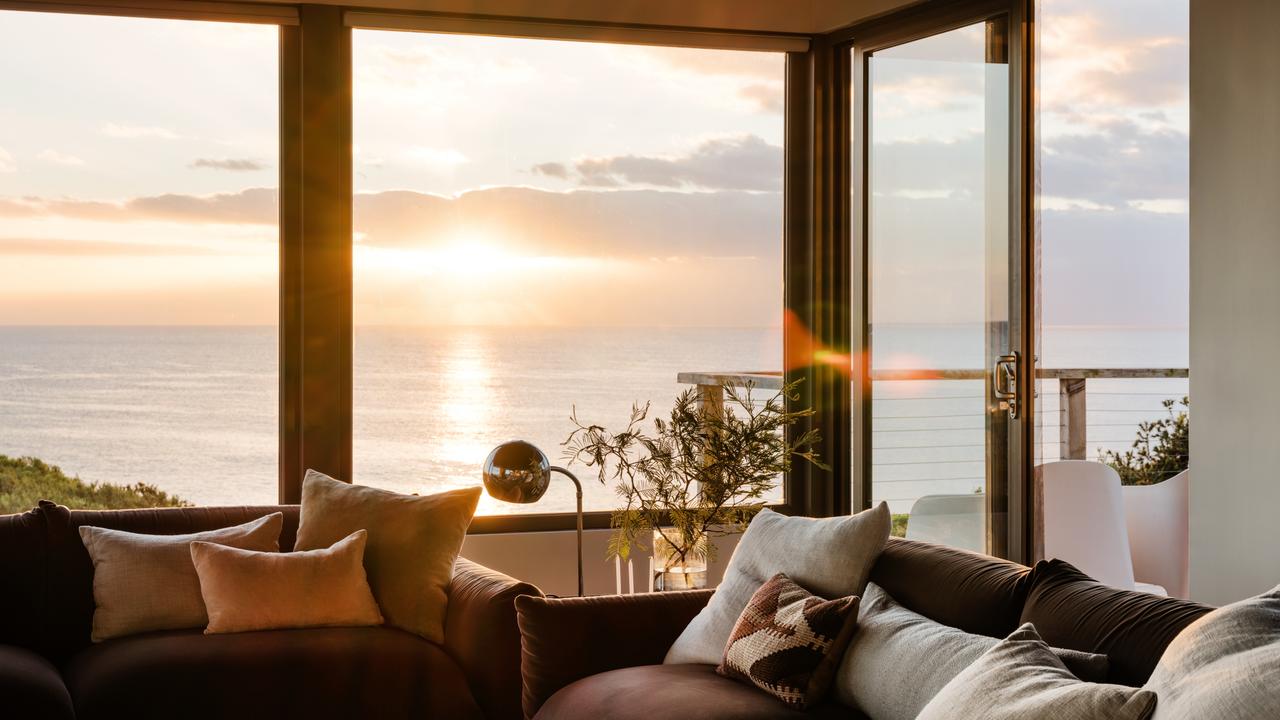“It’s a slow journey through the garden to the destination”
It was a six-year labour of love to create this beautiful house and garden adjoining Bouddi National Park on NSW’s Central Coast.
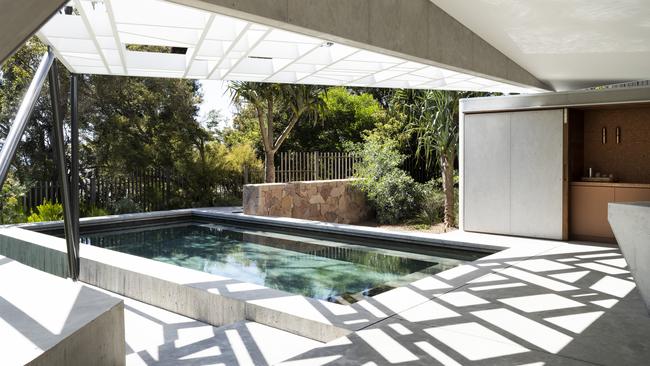
The contemporary native garden of Legato House at MacMasters Beach on the NSW Central Coast embraces the property’s connection with nearby Bouddi National Park. The sloping block has elevated coastal views from its highest point, but needed a major rethink to make it a family-friendly and visually exciting space. The result: a commendation in the Gardens category of the Houses Awards 2022.
The project extended over six years, during which the owners – both medical professionals – started a family. The first stage, in 2016, was a reimagining of the front garden and house entry by landscape designer James Headland of Pangkarra. He created a dramatic series of concrete platform steps that incorporate an off-form concrete pond. “We also changed the planting completely to a native garden,” says Headland. “The client is fascinated with native plants and was very involved in the planting choices.” Three mature old man banksias (Banksia serrata) were brought in to add scale; other plants include grass trees (Xanthorrhoea glauca), burrawang (Macrozamia communis) and Grevillea ‘Moonlight’.
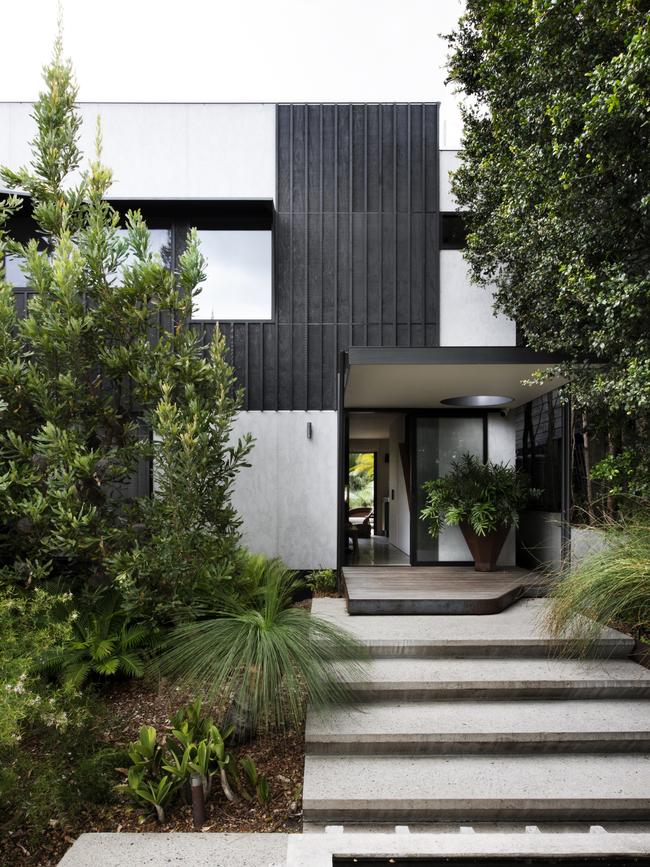
In 2019, the owners brought back architect David Boyle – who originally designed the house for others in 2006 – to upgrade the place, including its thermal performance. In a holistic approach to integrate house and garden, Headland laid out the gardens, pool and courtyards while Boyle re-clad the house, added awnings and designed the dramatic cabana to link with the pool. It was an easy collaboration as both had worked together before, but with Covid interruptions the project wasn’t completed until late 2021.
In the rear garden, a series of courtyards and stepped timber platforms lead up the natural slope to the top of the site, culminating in the cabana and pool, which Headland rotated 30 degrees to frame the view. “It’s a slow journey through the garden to the destination,” he says.
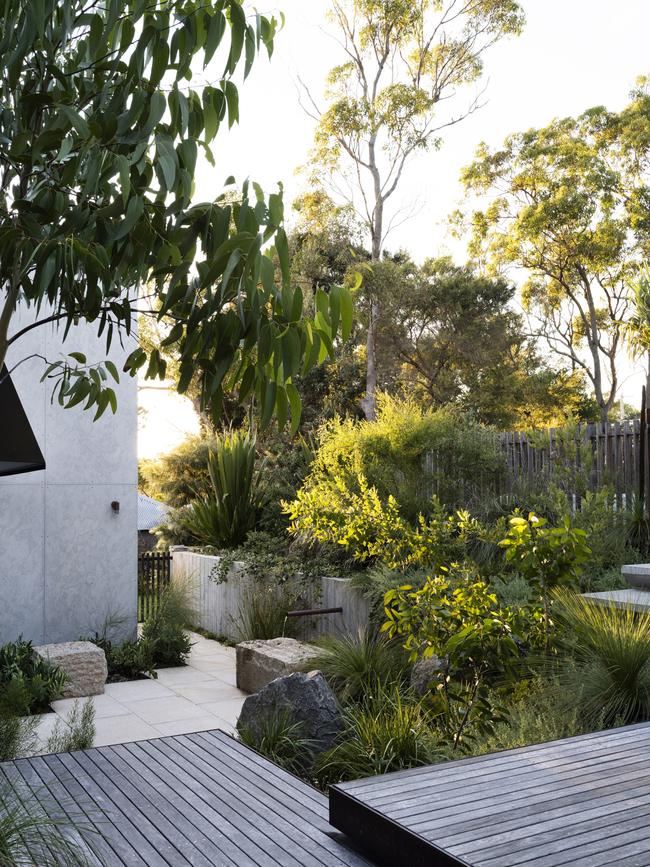
The cabana features a horizontal pergola that “floats” over the pool and provides dappled shadow play throughout the day. Grey limestone pool tiles impart a green-grey hue to the water that echoes the native plants, including banksias, scribbly gum (Eucalyptus haemastoma), pandanus (Pandanus tectorius), spear lily (Doryanthes palmeri) and native grasses.
In one south-facing courtyard, Headland selected pink granite for the “logs” that double as seats, because it’s less porous than local sandstone. Thriving in the moist shade here are tree ferns (Cyathea cooperi) and native violet. In another of the courtyards, a massive piece of granite plays a starring role; with a copper pipe trickling water onto its surface, it’s a Zen-like water feature.
“I love the intimacy of the courtyards,” says Headland. “There is wonderful engagement with the garden from the house and we managed to create privacy while maximising the long views. It’s been a very satisfying project.”
-
Q&A
My 15-year-old white mulberry looks healthy, so why each year do the fruit all drop off before they ripen? My other fruit trees are fine. Gail Oliver, Maryborough, Qld
White mulberries can be prone to premature fruit drop. Weather (high winds, heat, cold snaps) can be a factor but is unlikely every year. In dry periods, without regular water, they’ll shed young fruit. Incomplete pollination is possible; they are wind-pollinated. Most trees have male and female flowers so are self-fertile, but trees can be male (no fruit) or female trees (no fruit without a male nearby). Confusingly, they can also change sex or set fruit without pollination. Fun fact: white mulberries release their pollen explosively, at more than half the speed of sound.
How can I stop borers attacking my maple? They lay eggs under patches of bark then the larvae eat the bark, ring-barking branches.Michael Butcher, Melbourne
Borers indicate trees are stressed; healthy trees repel attacks more effectively. Try to improve your tree’s health with regular water, fertiliser and mulch. A microbial product such as Neutrog’s GoGo Juice might help. Keep checking the branches, and remove eggs or larvae by hand.
No matter what I do, my potted parlour palms develop brown fronds and gradually deteriorate. Why is this happening? Irene Geels, by email
Both underwatering and overwatering can cause brown fronds. Allow the soil to just dry out between waterings; never let water sit in saucers. Over-fertilising causes brown leaf margins. Mites can cause a silvery-brown appearance across the fronds; spray with organic Eco-Neem.
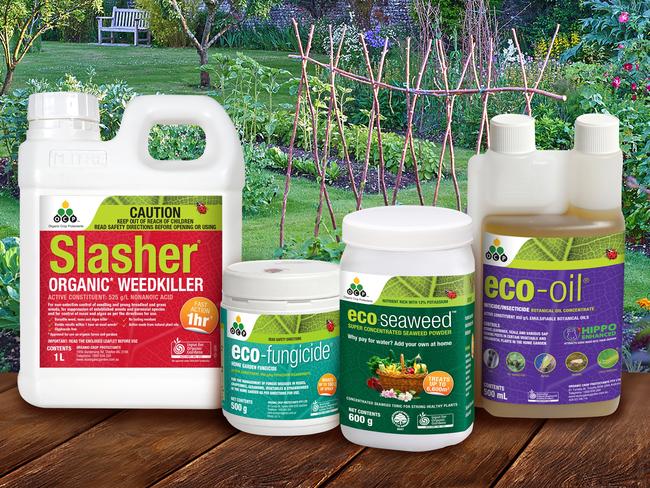
Send your questions to: helenyoungtwig@gmail.com or Helen Young, PO Box 3098, Willoughby North, NSW 2068. The best question for October wins a hamper of organic products (pictured) from Eco-Organic Garden worth $110


